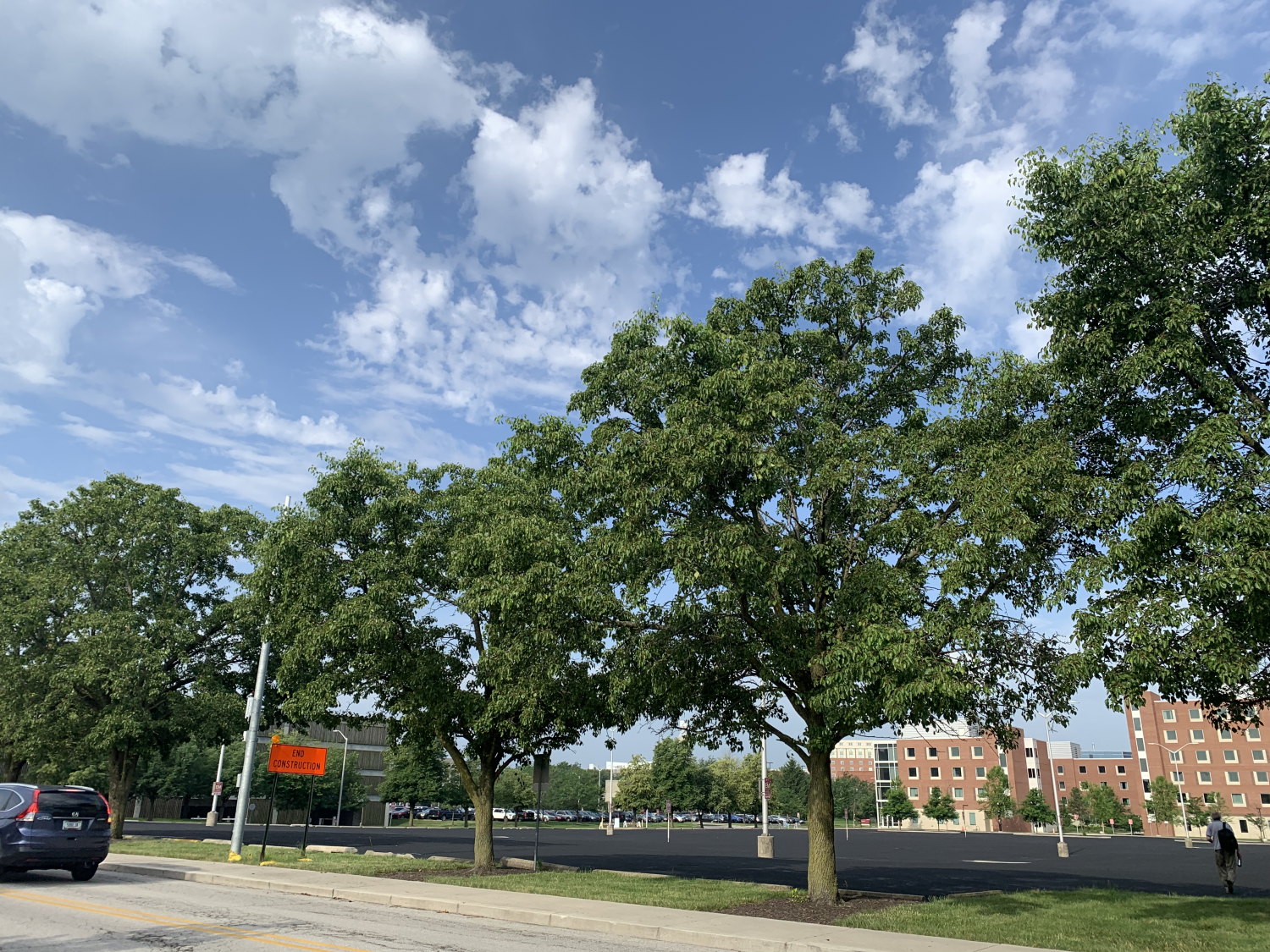IUPUI replacing invasive trees with native ones
By Teresa Mackin
June 13, 2022
Open gallery

IUPUI will remove dozens of invasive Callery pear trees on campus this summer and replace them with trees found naturally in Indiana.
Crews will begin to remove the invasive trees this week, and shortly after that, crews will be back to plant new ones. Last year, the campus removed and replaced about 30 trees, with plans to continue over the next several years until they’re completely replaced.
The Callery pear tree, also called Bradford pear, is popular in central Indiana because of its noticeable white flowers. Indiana recently designated 44 species of plants as invasive through the Terrestrial Plant Rule, which makes it illegal to transport or introduce these plants in the state. But Callery pears weren’t on the list. However, the State of Indiana Cooperative Invasives Management has asked landowners to help stop the spread by removing them from landscaping and replacing them with native trees.
“The Callery trees bloom earlier than other native trees, so birds eat their fruit and spread the seeds widely, causing these trees to push out other plants in the area,” said Jesse Beck, project manager of Landscape Services within IUPUI Campus Facility Services. “This particular tree is rapidly spreading into forests, right of ways and stream banks, and it’s suffocating out native plant species.
“We also know that the pear trees don’t support native insects, so they don’t provide a food source for birds, bats and other wildlife. By planting native trees in their place, we will re-establish a habitat for wildlife, as well.”
“We want to do our part to be a small part of the solution,” Beck said. “After this phase, we will still have some Callery pears on campus, near University Library and Wood Fountain. Since those are well-used green spaces, we are going to work to get other mature trees in those places before removing the pears entirely.”
The locations where you can expect to see crews working over the next couple weeks are:
- Outside the Health Information and Translational Sciences building at 410 W. 10th St.
- Parking Lot 69 and the Blackford Street Garage near 800 W. North St.
- Hine Hall, along the east side of the building facing Blackford Street.
- Parking Lot 7, near 10th and Wilson streets.
This is part of a larger push to remove invasive species from the IUPUI campus. Facilities crews have been working with Keep Indianapolis Beautiful to remove invasive plants that are on the Terrestrial Plant Rule list, as well.
“Every native plant we have on campus may encourage a bee or a butterfly, or a cardinal,” Beck said. “Every little thing we do can make a big impact.”
IUPUI has more than 3,700 trees on campus, providing a structural value of $40.2 million to the university, according to IUPUI Sustainability. They contribute to the removal of 1.76 tons of pollution, the storage of 6.323 thousand tons of carbon and the production of 174.4 tons of oxygen each year. They also contribute to the avoidance of 88.7 thousand cubic feet of water runoff annually.
IUPUI Sustainability recently wrote a blog highlighting the importance of using native plants both on campus and at home, and listing the many ways IUPUI helps its local, urban ecosystem.